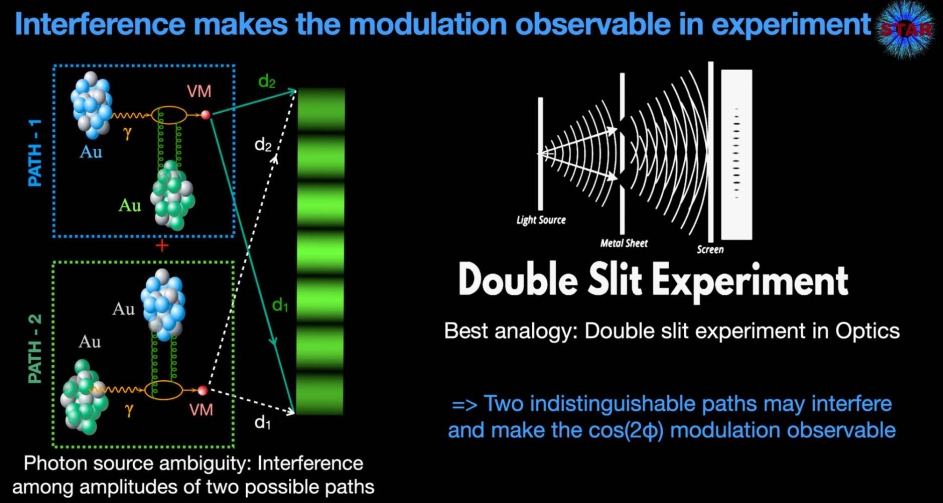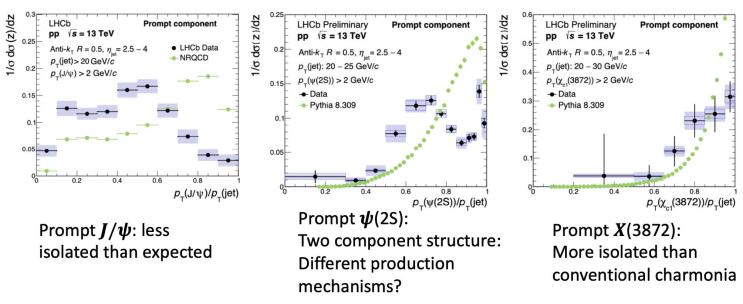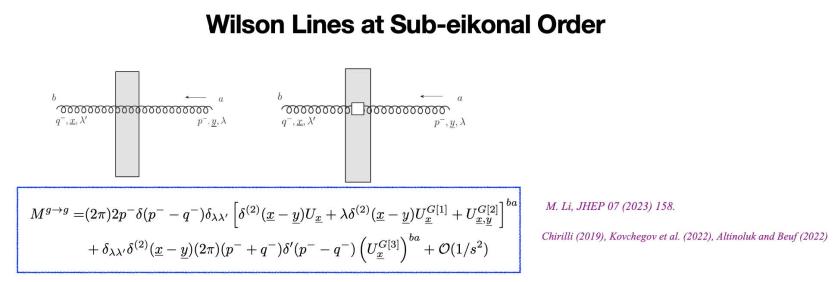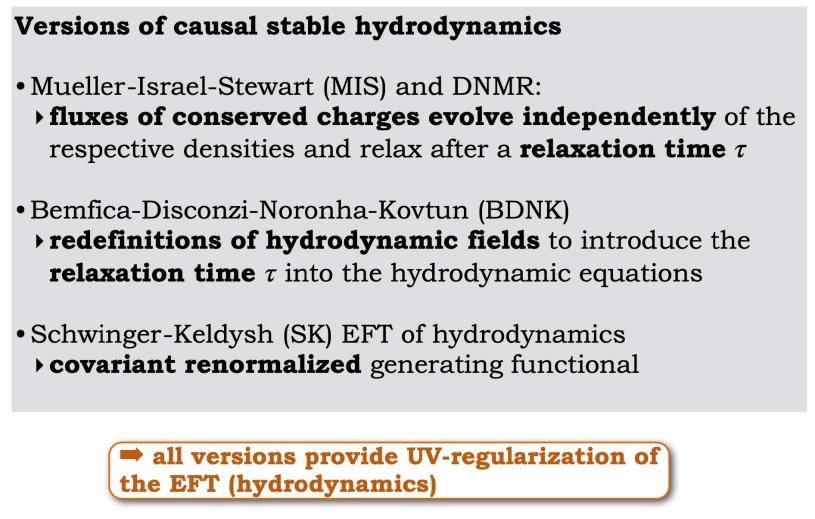INT 24-2b Highlights Report
Heavy Ion Physics in the EIC Era
July 29 - August 23, 2024
Y. Chien, M. Djordjevic, I. Vitev
The program discussed soft and hard probes of heavy ion physics in the first two weeks and the transition to EIC physics in the third week. In the fourth week we had an embedded workshop gathering both theorists and experimentalists discussing all these aspects. Here we would like to make a few highlights of the program which represent some strategic developments of the field.
First of all, ultra peripheral collisions (UPC) have emerged as a strong subfield, which naturally falls within both the heavy ion physics and EIC physics contexts. Besides the feature of precision studies of hadronic events in a clean environment, there is a classic experiment of quantum inference that can be done using UPCs

There is also a recent surge of energy-energy correlator (EEC) studies which were made possible because of advances in theory calculability and experiment precisions. It relies on investigating particle distributions down to very small angle (i.e. very high angular resolution) where potential, nuclear dynamics scale may emerge.

To prepare for the precision era at the EIC, some high precision calculations of hadronic observables have been achieved at next-to-next-to- next-to leading logarithmic (NNNLL) order matched to next-to-next-to

leading order (NNLO) results, which have been the state-of-the-art precision for LEP hadronic observables for about 10 years already. This sets the milestone for progress towards N4LL and N3LO, which will be the goal for the EIC science.
At the LHCb there were also a proliferation of identifying exotic, hadronic bound states (such as tetra or pent quark bound states) whose production mechanisms are not yet fully understood. Mesons, baryons and quarkonia productions also demands better understanding.

There were also many theory developments moving toward more accurate descriptions of evolution equations by including higher-order contributions, for example...

Gluon double spin asymmetry at sub-eikonal order,

Unification of Color-Glass-Condensate (CGC) and higher-twist formalisms was also achieved by including sub-eikonal contributions.
Progress has also been made by treating quarkonia and jets as open quantum system satisfying the corresponding Lindblad equations, which can be a more systematic development of framework describing medium effects.
One of the goals of heavy ion physics is to determine the inner working of the quark-gluon plasma, and some interesting progress was made from the soft probe side by examining the UV behavior of hydrodynamics effective field theory.


Regarding hard probes of heavy ion collisions, more jet substructure studies were made in terms of precision calculations and new observable designs to probe different aspects of jet modifications. Comprehensive Bayesian analysis has been conducted to constrain the underlying models.

| INT 24-2b Program Webpage |
